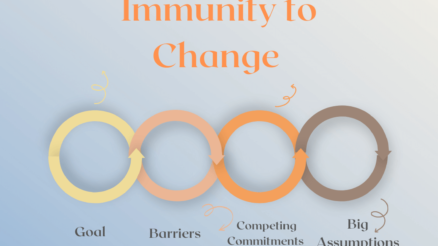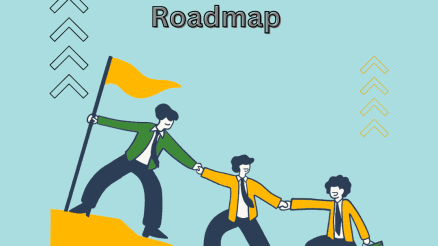What is ADKAR Model of Change Management?
ADKAR is an acronym of five words Awareness, Desire, Knowledge, Ability and Reinforcement. These five words represent a renowned model of change management commonly known as ADKAR model. It was developed by Jeff Hiatt in 2003 and introduced at Prosci which is a management consultancy of change management.
ADKAR model is based on extensive research of studying change process of nearly 900 organizations. This model offers five actions which focus on individual change and ultimately successful organizational change. Hiatt refers to these five actions as building blocks of organizational change.
This model emphasizes that successful change at organizations never happens if individuals are not change. Therefore, individuals need to change first for change to happen at organizations. Hiatt also emphasizes that these five building blocks are sequential and each step needs to be completed before going to the next.
Building Blocks of Change Management
Let’s discuss the 05 actions and building blocks of ADKAR change model
Awareness
The first action is that every individual or employee is fully aware about the change. They must have a clear understanding that why change is necessary; what change is going to achieve and how change will be implemented. This basic level of awareness is the first building block of change management. The change leaders or management must ensure through effective communication that every employee knows the desired change.
Desire
The next action is that employees must have the desire to support change and be part of change process. When employees fully understand the change his/her organization seeks to achieve, it is likely that he/she develops a desire to join change process. Change leaders and management helps creating desire for change among employees by giving them incentives.
Knowledge
The third building block or action is to provide knowledge to employees about the intended change. This action is about transferring more specialized knowledge through training, mentoring or coaching of employees about the scope of change. In this step, focus will be on telling how change will be implemented and what will be the role and responsibilities of employees to make this happen.
Ability
The fourth action is to make employees able to deliver the assigned role in change process. This step is about transferring skills sets that are prerequisite of the desired change. In addition to imparting specialized knowledge, capacity of employees can be improved by planned mentoring and regular practice.
Reinforcement
The final action of reinforcement is about sustaining the change. It is reinforced that the only way forward is the change and employees should stick to new methods, practices and systems. A strong performance assessment system based on positive feedback, appreciations, rewards and prompt corrective actions helps to achieve this building block of change management.
Why to use ADKAR Model
Following are the advantages of ADKAR Model
- This model is more practical as its focus is on individual change or ensuring individuals to make transition and transform.
- It is not limited to tasks and processes of change management but in fact it emphasizes on achieving greater level of changes in individuals.
- The ADKAR model also helps to assess the effectiveness of the change process. Progress can be tracked at the individual level, gaps and challenges are identified; and corrective action are taken.
Disadvantages of ADKAR Model
- ADKAR model is only suited for incremental change which is limited in its scope. It can not be applied to other forms of change like transitional and transformational change which are bigger in extent and scope.
- This model works best for small teams. It will be challenging to apply this model for large scale change in organizations which have big human resource.
- ADKAR model overlooks the perspective of management which leads the journey towards change and provide guidance and support to reach the final goal.
Take Home Points
- ADKAR stands for Awareness, Desire, Knowledge, Ability and Reinforcement.
- The focus of this model is on individual change which is the basis of organizational change.
- The first action to create understanding about change; the second action is to create willingness among employees to execute change; the next action is to impart knowledge about the change; the fourth action is to build capacity of employees and the final action is to sustain change.
- This model has its own pros like it is practical, emphasis on human resource, and progress can be assessed easily.
- Its cons include limitation in scope, suitability only for small teams and narrow role for management.



